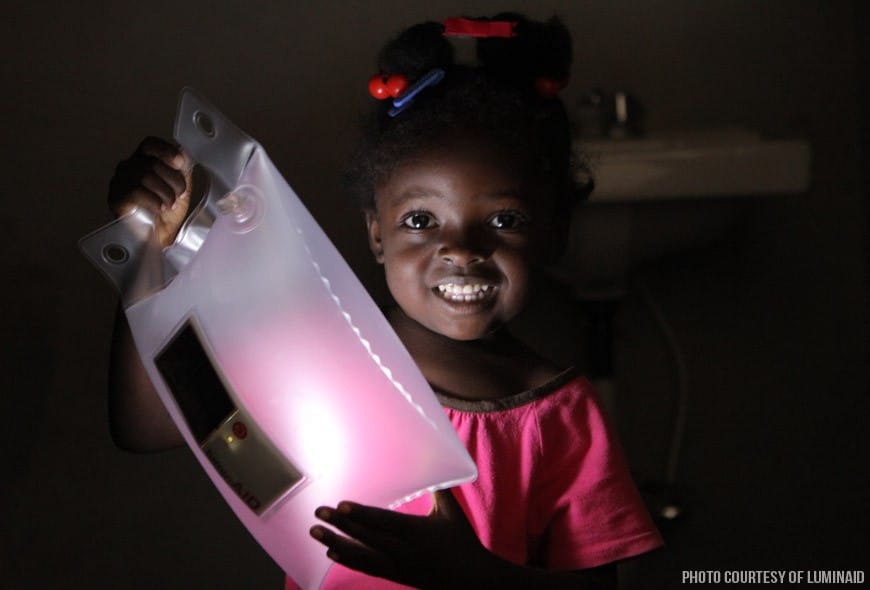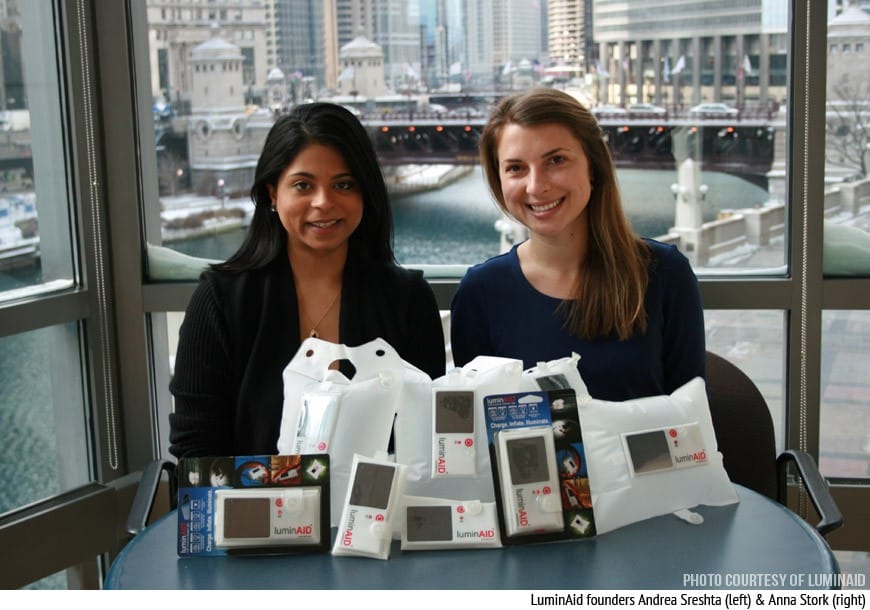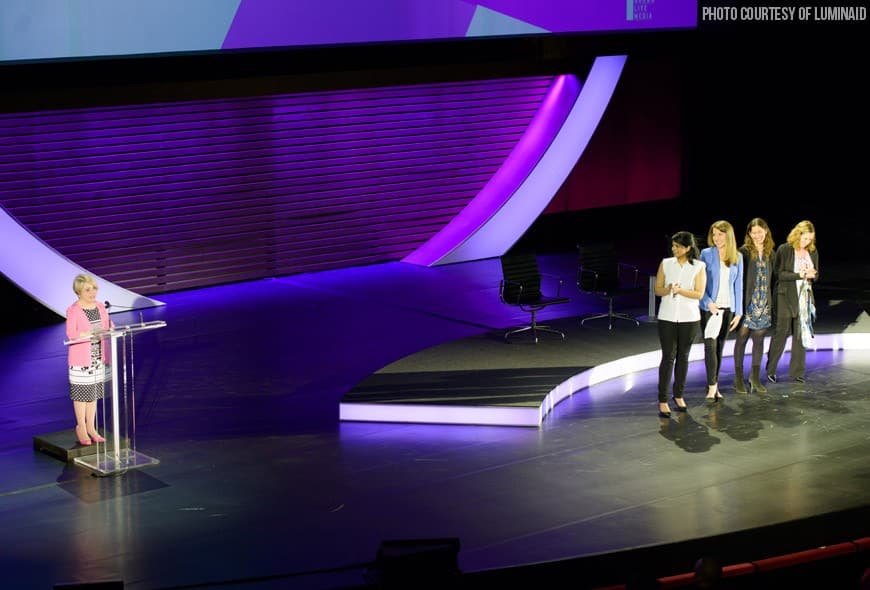Between 2000 and 2012, natural disasters caused $1.7 trillion in damage and affected 2.9 billion people. In fact, worldwide in 2011, there were 154 floods, 16 droughts, and 15 cases of extreme temperatures.
In this world of natural disasters, over 1.6 billion people live without stable electricity or have limited access to electricity. Because of this, solar light is essential in many disaster scenarios. The trick is finding a convenient and safe light that can benefit the quality of life for those undergoing the struggles these disasters often produce.
The Solar Light Solution
A safe means for disaster victims to access light is the newly developed LuminAid product. LuminAid is a solar light that uses LED technology. This means that the light is “illuminated solely by the movement of electrons in a semiconductor material” It has the capability to charge for 6 to 7 hours and produce 16 hours of LED light. After charging, you can illuminate the light with a power switch once for low and twice for high. The technology is still being configured to bring brighter, longer lasting light for the charge that is provided. For added convenience, it’s water-resistant, floats, and can be charged on the go. The LuminAid has a unique inflation factor that diffuses light like a lantern and protects eyes from any glare caused by the LED light source.
The LuminAid uses a Lithium-Polymer Ion battery, which is similar to the battery used in cell phones. This type of battery was chosen for energy storage capacity and quality. The technology gives the LuminAid the ability to hold a charge for up to four months if necessary.
Founders of LuminAid
Anna Stork and Andrea Sreshta are the brilliant millennial innovators behind the LuminAid product. They met at Columbia University while they were both getting their graduate degrees. Although Sreshta was pursuing a degree in Architecture and Stork had a background in engineering, they were both strongly influenced by the fact that the presence of lighting in the face of natural disasters seemed to be overlooked. Between both of their incredible, design-focused mindsets, the LuminAid was born.
Sreshta told MiLLENNiAL about the driving motivators behind the project, “We really wanted to help people carry on with their daily lives, even after dark. That is why we strived to provide a safe source of light versus an open flame or candle.”
The Success of LuminAid
The disastrous earthquake in Haiti was partially responsible for inspiring the LuminAid, and what started as a small school project has turned into a great success. Stork and Sreshta were able to create lighting for the thousands of Haitians living in “tent cities” that sprang up as the restoration process ensued. A restored sense of safety was provided for many of the women and children who were forced to live in the darkness from sunset to sunrise.
Since then, the dynamic duo has continued to do tremendous work. The self-funded business has worked on projects in more than 15 countries and distributed over 20,000 LuminAids to victims in disaster scenarios. The company has also provided more than 3,000 units to 10 organizations in Asia and Africa.
The success of LuminAid has definitely not gone unnoticed. Stork and Sreshta were named winners of the Class of 2014 Toyota Mothers of Invention, a program that celebrates innovative women whose ideas are effectively changing the lives of others. Crediting their inspirational work, Toyota has awarded LuminAid with Driving Solutions grants of $50,000 to further develop the impactful solar light product.
Stork and Sreshta hope to further refine the base product. They want to produce additional charging performance parameters to continue making the LuminAid more efficient and user-friendly. For example, they are currently looking for ways to increase the quality of LED light, making the product more durable, and incorporating a biodegradable plastic covering. They hope to maintain the balance of creating a high quality product while keeping the cost low.
In their continued success, Stork and Sreshta are constantly thankful for the supportive networks that have helped build their company. They understand the importance of this product and why their work needs to continue. Sreshta concludes, “Disasters are terrible events and they will inevitably happen. We want to work hard to make this technology available.”



